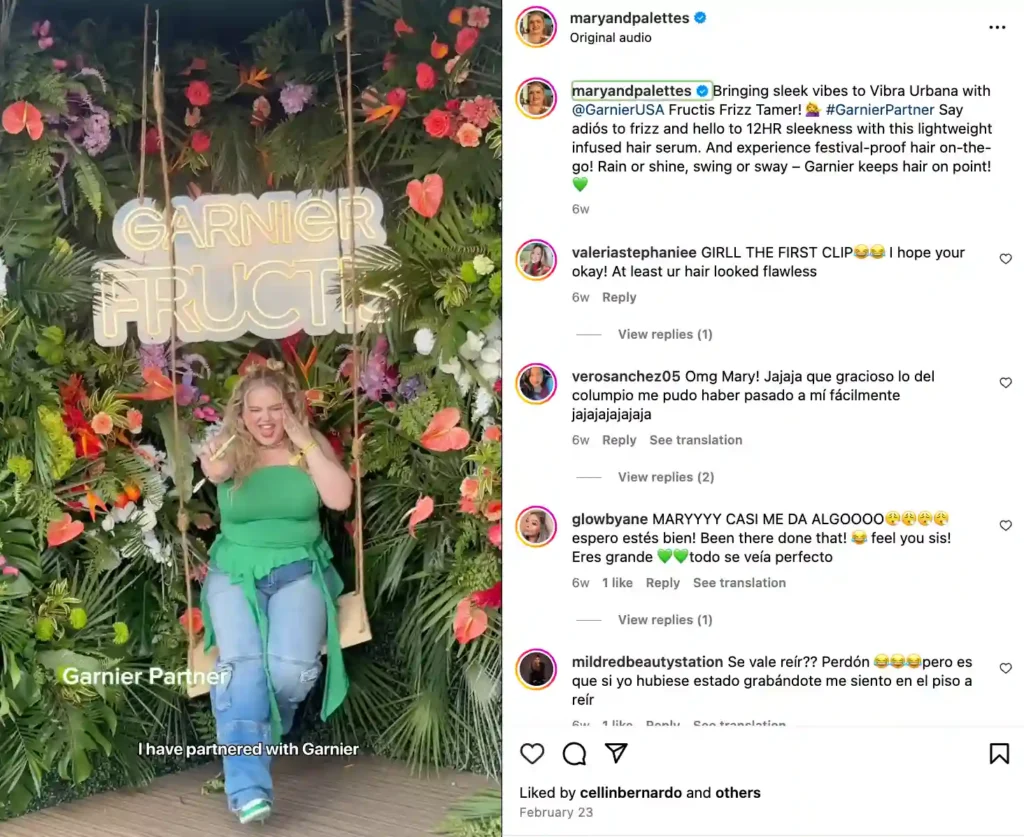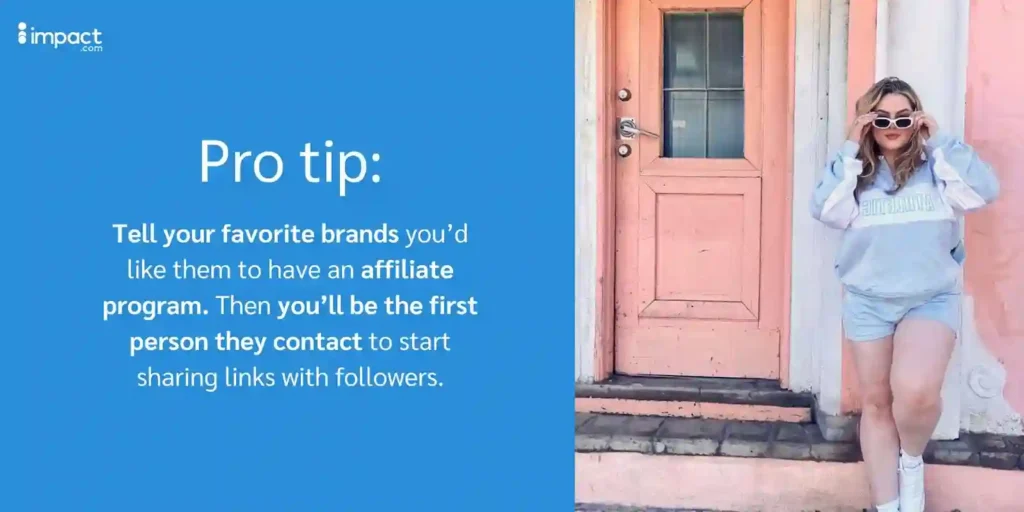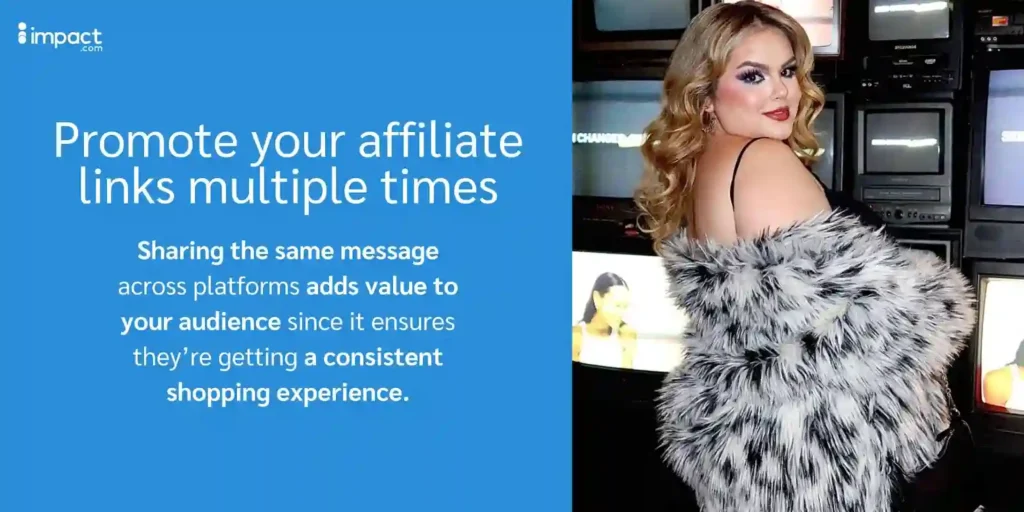Maria Fassrainer (@maryandpalettes) became an influencer before influencing was even a thing in Latin America. At the time, there were no playbooks or how-to guides. Instead, she followed her instinct and prioritized experimentation.
In 2014, she studied chemical engineering at a university in Venezuela. Yet, her heart truly belonged to creative makeup and beauty products.
So, she began sharing makeup content online for fun and to improve her English skills. Before long, she started to approach her work more strategically, pondering the potential for turning her passion into a source of income.

Today, she’s a beauty and lifestyle influencer with over 170k followers on Instagram and plus has a notable following across TikTok, YouTube, and Facebook. You may have seen some of Maria’s collabs with top beauty brands such as Garnier, Ofra Cosmetics, Sigma, Colourpop, and other premier brands.
For Maryandpalettes, affiliate has become the second-most lucrative channel in her monetization mix.
By monetizing with affiliates, she got her income to a level where she felt empowered to quit her full-time job––the moment she made the same amount from affiliate marketing as her job, she quit.
Discover how she transformed her passion for makeup into a thriving creator business through affiliate income, and learn how you can replicate her achievements.
How affiliate marketing can elevate your earnings
By implementing the right strategy and techniques, affiliate links can serve as a robust revenue stream for creators.
When Maria received her first check from an affiliate brand partnership, she was so surprised by the large sum she thought was a mistake. Listen to her story:
Affiliate marketing enables Maria to:
Make passive income. Maria shares the products she’s already using during tutorials so her fans can replicate the look. With affiliate links, she can earn commission for sharing what she already loves and recommends.
Collaborate with budget-conscious brands. When brands can’t afford a more in-depth collab, Maria can propose an affiliate partnership to open new collaboration opportunities.
Ensure a steady income. Affiliate income can help diversify your income and fill the gaps when traditional sponsorship opportunities decrease, providing financial stability. This can be a huge help during slow seasons or when marketing spend dries up.
Create a better audience experience. Maria makes it easy for followers to shop recommendations, enhancing audience trust and engagement. It also simplifies the purchasing process for followers and increases the chances they’ll buy.
Maximize partnership earnings. Certain brand partnerships offer Maria better returns through affiliate marketing. If she promotes a product her followers will love, this model can generate more income compared to standard flat fee deals.
The best part is it’s simple to get started with affiliate marketing and reap the benefits quickly. All you need is a trackable link your audience can easily click on, and you’re good to go.
Maria thinks of affiliate marketing as a way to expand the earning potential beyond a single post. Here’s how she explains it:
6 strategies creators can use to boost affiliate income
Affiliate marketing can be as simple as including a link to your bio or video description. But you’ll want to do more to get the best results and maximize your earnings.
Try these strategies to make the most of your affiliate marketing links:
- Prioritize affiliate partnerships with brands you love
- Recommend items outside of your niche
- Keep a close eye on your analytics
- Be responsive to your audience
- Use your links across platforms and content types
- Use affiliate opportunities to open the door to other partnerships
1. Prioritize affiliate partnerships with brands you love
Working with brands you already love is a great way to both:
- Share authentic content
- Build trust with your audience
Followers love to see that you’re genuine and have a personal connection with the brands you post about. So, prioritize affiliate partnerships where you can continually recommend certain products to your audience.
As you repeatedly recommend these products, you increase the chance your audience will convert. Plus, your followers will see that your partnership comes from an authentic love of the brand.
Even if your go-to brand doesn’t offer an affiliate program, suggest they consider it. By planting the idea, you position yourself as their top choice to kick off link sharing with your followers.

Image source: @maryandpalettes
2. Recommend items outside of your niche
People buy because they trust your recommendations and enjoy your content. So consider expanding beyond your niche—you’ve earned your audience’s loyalty, and they want to hear your opinions.
Branch out into other areas that complement your personal brand—as long as you genuinely believe in the product you’re promoting.

Image source: @maryandpalettes
For example, even though Maria wouldn’t describe herself as a cook, she loves an aesthetic kitchen and has a beautiful set of cookware that her friends and family would compliment. Maria shared an affiliate link with her after her sister mentioned she wanted to buy a pan.
Since Maria had already created the affiliate link, she decided to take a chance and post it on a 60-second Story, where she talked about how much she liked the pots and pans.
The results speak for themselves––in the first 24 hours, it converted $750 in profit. Listen to her full story:
The lesson: Your audience trusts you and wants to hear your sincere recommendations, even if they don’t fall within your usual niche.
Though prioritizing products you always promote is a good starting point, you can use affiliate links whenever you highlight an item you like.
3. Keep a close eye on your analytics
Data-driven insights will help you understand what people want to see from your content. You can use platform-specific analytics like Instagram insights to get an overview of how your audience engages with you.
Joining a platform like impact.com / creator lets you dig deeper to find out what’s selling well and what’s not. Some helpful insights that could inform your affiliate strategy include:
- How many people clicked the link
- How many people purchased through the link
- Which followers engaged with the link
This information is invaluable for understanding what products resonate with your audience and what they’re less keen on.
For example, if you post a link and no one clicks through, your audience may not be interested in that product. Alternatively, many clicks and conversions indicate your audience is engaged and wants to see more.

Image source: @maryandpalettes
Since affiliate deals require zero upfront investment from the brand or creator, it’s a great way to test your audience’s interest in a product.
For example, Maryandpalettes often posts affiliate links in Instagram Stories to gauge audience interest in a product. Following clear audience interest, she continues posting other content formats that may require more time investment.
4. Be responsive to your audience
Interacting with your audience fosters trust and makes them feel important. They’ll start to see you as a trusted friend with all the best suggestions.
For example, Maria always shares an affiliate link when someone asks her for a recommendation via comment or DM.
Doing this consistently primes your audience to expect links from you. Maria’s audience is so used to her sharing links that they proactively reach out and ask her for them.
It’s all about cultivating positive relationships with your audience while positioning yourself as a trusted friend and an authority on a topic. Here’s how she uses affiliate marketing when interacting with her audience:
5. Use your links across platforms and content types
Look for opportunities to work affiliate links into your content across platforms.
Reaching your audience in multiple ways increases the chances of conversion. It also gets them used to seeing your affiliate links more often.

Image source: @maryandpalettes
Remember the rule of seven? Many people need to see a product seven times before they purchase it. You’re reminding followers what’s on offer by publishing affiliate content across different platforms.
Maria encourages people to subscribe to her newsletter which she sends a few times a month. Her emails include a recap of her top posts and most popular products. This approach provides multiple ways to monetize her content while providing her followers value.
Listen to other ways she uses affiliate to create more value for her audience:
6. Use affiliate opportunities to open the door to other partnerships
Affiliate marketing can help you maximize current partnerships and open up new opportunities.
Maria uses her affiliate stats to prove her content converts and delivers results. Listen to her explain how this invaluable data helps her more in-depth partnerships and increase commissions:
Affiliate partners can also be a great way to begin partnerships as a beginner.
You can also pair affiliate marketing easily with other types of partnerships. For example, when you strike a sponsorship deal with a brand, negotiate an affiliate agreement to maximize your income. This type of collab is known as a hybrid deal.
Since creators receive a direct commission from each sale through their link, it also incentivizes you to create the best possible content for the brand.

Image source: maryandpalettes.com
Inject new life into your monetization strategy with affiliate marketing
You don’t need to choose between affiliate marketing or paid partnerships. Creators who pursue multiple income streams have the best chance of creating a successful and scalable business.
“We doubt ourselves so much but anyone can do it. My mum got started with it last year and is rocking it! Affiliate marketing has the power to help you quit your office job.”
Start by asking brands you love for affiliate links. Then, share them with your audience and evolve your strategy based on their reactions.
Want to find affiliate links from top-notch brands, measure your success, and share tangible results with brands? Sign up for impact.com / creator.
Continue learning with these additional resources:
- Creators, here’s why you didn’t get accepted to that brand campaign (blog)
- From passion to profit: A content creator’s guide to making money doing what they love (blog)
- What brands want: building successful creator partnerships in 2023 (research report)
FAQ
Yes, YouTubers can engage in affiliate marketing by:
-
- Promoting products or services in their videos
-
- Including affiliate links in their video descriptions
This lets them earn a commission for each sale through their unique links. It’s a popular and effective way for content creators to monetize their channels, including YouTubers.
Influencers can get affiliate links by signing up for an affiliate program on platforms like impact.com. Once approved, they can access a dashboard where they can generate unique affiliate links for the products or services they want to promote.
These links can then be shared on their social media, blogs, or other platforms to earn commissions on sales made through the links. They can also use impact.com / creator to pitch brands and build relationships.
Influencers usually get paid a fixed commission for each sale through their affiliate link. The amount influencers get paid depends on factors such as:
-
- The commission rate
-
- The price of the product
-
- How many conversions the influencer drives
-
- Affiliate partnership terms
Some influencers might earn a few dollars per sale, while others can make thousands or even more.
You don’t need a specific number of followers to be an affiliate marketer. You can start sharing affiliate links with your friends, family, and audience anytime.
Large followings can increase the likelihood of conversions. Still, factors such as product/audience fit, what kind of products you promote, and engagement levels also influence how much you can make. So, you don’t need to wait until you have a huge following to make money from affiliate links.




